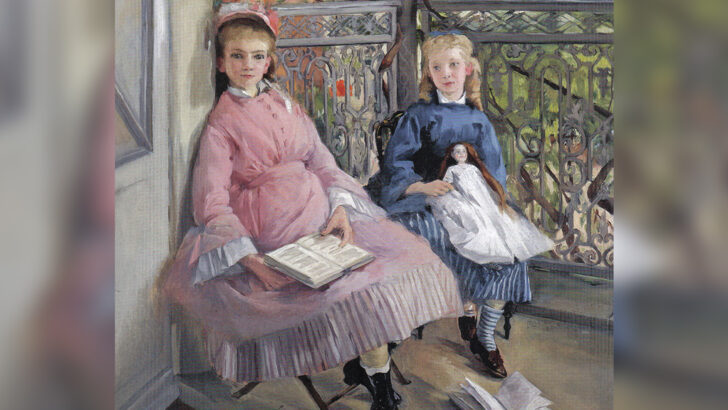Impressionism and its Overlooked Women, curated by Dorthe Vangsgaard Nielsen, and seven contributors
(Ordrupgaard, €45.00 / £38.50)
The special summer exhibition at the National Gallery of Ireland celebrates the women painters of the Impressionist movement in art. The just opened exhibition has been organised by Ordrupgaard in Denmark in collaboration with the National Gallery, and has been curated by Janet McLean of the NGI and Dorthe Vangsgaard in Copenhagen.
The show is intended to mark in a significant way the centenary of the first impressionist exhibition held in Paris in 1874. But rather than providing yet another display of works by the more famous male figures, here instead we have a selection of four women painters to provide a quite different perspective.
Impressionist era paintings are among those that go for the highest prices at modern auctions, a stark contrast to those far distant early days, when the academic painters of the day were still dominant.
Focussed
The four painters selected are not exactly “unknown” of course, but they are less attended to, less focussed on. But as might be expected, the female point of view is quite different to the mountainscapes, water gardens, café life and boating scenes that seem to epitomise for many the Impressionists.
The painters selected are Berthe Morisot (1844-1926), Eva Gonzalès (1849-1883), Marie Bracquemond, and pre-eminently Mary Cassatt (1844-1926).
Mary Cassatt, an American painter of independent means, made her mark by living long enough to receive her due admiration by the 1920s. But the others all have vital points of interest. In general these painters deal in more intimate, private, domestic moments – they paint scenes of love and affection of a kind men would never dream of doing.
The accompanying book put together by the Danish team who originated, planned and mounted the exhibition, is filled with images of colour and vitality which are very memorable in their small details. For many an artist’s artist life though was often hard. The son of Marie Bracquemond recalled that his mother was in effect discouraged by his father, also a painter, and the struggle to make one’s way afflicted all of these artists in different ways, as the separate essays on each of them in the text discuss.
The results are vivid with life and emotion and hence have an immediate appeal. This is most certainly an exhibition not to be missed”
In the text, however, Jeanne Pillon discusses what she calls “Marie Bashkirtseff’s “sincere art” – though she is an artist not actually presented in the show. This is a pity, for though she died at the age of 25, her extraordinary journal became on publication an immediate classic, which kept her imagination if not her paintings alive in a unique way.
Remarkable
However, what is on show is remarkable enough. The notion of painting “modern life “ was expressed by all these painters, largely the modern life of women. They sought (like their male peers) to express the fugitive nature of life and light in quickly worked drawings and paintings. The results are vivid with life and emotion and hence have an immediate appeal. This is most certainly an exhibition not to be missed.
The essays, however, are followed by a full annotated catalogue, which adds considerably to the general accounts of each painter.
One thing to note as unusual in this exhibition are the presentation of etchings and engravings by some of the artists. These are the sort of things rarely seen in gallery exhibitions. and the items on display come in fact from libraries in New York and Dublin. But these have their own special interest. The images in part display the influence of Japanese woodblocks prints, but the etchings often quickly worked are fascinating. Don’t neglect to examine them specially.
Exhibition runs to 6 October 2024; entry €19.00, seniors, €15.50; Wednesdays, 9.15am -11.30am, free; Thursday special, 5.00-7.15 €5.00


 Peter Costello
Peter Costello Eva Gonzalès, The Window, created about 1865 (Denver Museum of Art)
Eva Gonzalès, The Window, created about 1865 (Denver Museum of Art) 